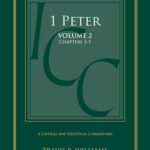The "Gospel" according to the Talmud
David Instone-Brewer argues in a recent article that the Talmud’s account of Jesus’ trial contains the original Jewish charge against Jesus. The lines, as preserved in the Munich ed. (1342), read like this:
It was taught: On the Eve of the Passover they hung Yeshu the Notzri. And the herald went out before him for forty days [saying]: ‘Yeshu the Notzri will go out to be stoned for sorcery and misleading and enticing Israel [to idolatry]. Any who knows [anything] in his defence must come and declare concerning him.’ But no one came to his defence so they hung him on the Eve of Passover (b. Sanh. 43a).
Instone-Brewer argues that the core of the tradition comprises the phrase “on the Eve of the Passover they hung Yeshu the Notzri [= Jesus of Nazareth] for sorcery and leading Israel astray” and that the other elements were added sometime in the 2nd cent. to alleviate the difficulties caused by the trial’s date, method, and charge (spec., “sorcery”).
If he’s right, then we have here independent testimony about Jesus’ undeniable power (i.e., “sorcery”) and an explanation for Jesus’ death that corresponds with and, moreover, helps us understand the Gospels—particularly their presentation of Jesus’ opponents (see, e.g., John 7:12; also Mark 3:20–30 and par.; Matt 9:27–34; John 8:48–59 and 10:1–21; cf. also Wright, Jesus and the Victory of God, 549).
Note: For another brief survey of Instone-Brewer’s argument, along with a first-hand look at the Munich ed. of the Talmud, see his conversation with Peter Williams below. Moreover, for a similar note about Jesus’ undeniable power, see my post “Who is Jesus? Mark’s Two Options.”
[youtube http://www.youtube.com/watch?v=jF0egAzJ7bw?feature=player_detailpage&w=430&h=270]


